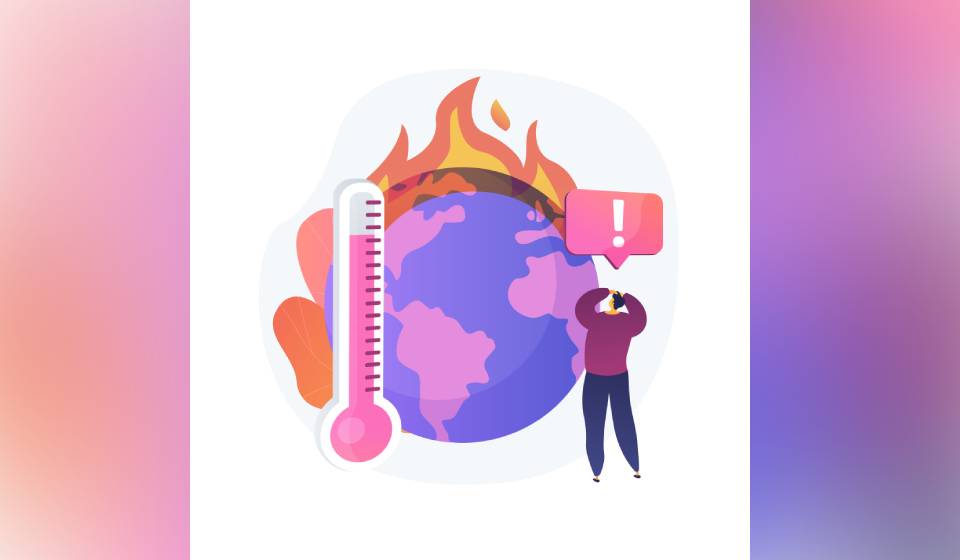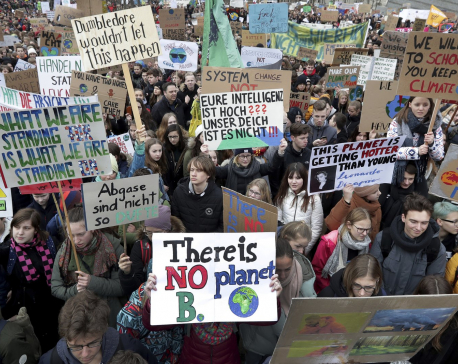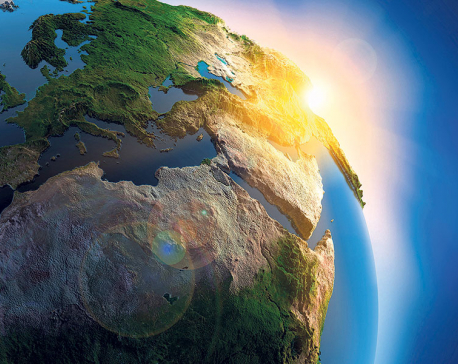
OR
Opinion
Climate change and loss of culture: Why you should care
Published On: January 24, 2023 08:45 AM NPT By: Subash Pandey


Subash Pandey
The author is currently working as an International Climate Action Intern with World Resources Institute based in Washington DC. He is a graduate student of Climate Science and Policy at Bard College in New York.news@myrepublica.com
What’s your mental picture of the impacts of climate change? Starving polar bears, prolonged drought, rising sea levels, inundated cities, melting glaciers?But have you ever thought about the loss of cultural components because of climate change?If your answer is “no”, you’re in the same boat as most people.
Public awareness and understanding are very important aspects that determine how we respond to and devise solutions to tackle the problems, including the impacts of climate change.“Does climate change cause rising sea-levels? Does climate change cause harm to wildlife and their habitats? Has climate change resulted in more droughts?” are the commonly asked questions by the well renowned research institutions like Pew Research Center and Yale Program on Climate Change Communication to understand the perception of common people about climate change.
The commonality among these questions is that they are all related to biophysical impacts of climate change. The biophysical impacts, including starving polar bears, prolonged drought, rising sea levels, melting glaciers shape the mental pictures of climate change of many people. Therefore, the non-economic losses including loss of culture have received very little attention so far. There are mainly two reasons for this. First, much of the research on climate change focuses on its biophysical impacts like the ones mentioned above. These make regular headlines in the major media and shape many people’s assumptions about climate change. Second, the loss of potentially unfamiliar cultures and values is difficult to quantify and potentially to empathize with.
Sincere efforts, therefore, should be made to make the public more aware about non-economic losses. This is a very critical moment for the public to understand about non-economic losses because extreme climate events have already exceeded human adaptive capacity thus resulting in more non-economic losses. With increasing incidence of extreme climate events, for instance the current drought in the Horn of Africa and flooding in Pakistan where thousands of people lost their lives and livelihoods, people fleeing their home to survive will become a new normal. There is no doubt that people fleeing to new locations for survival will have hard times for social acceptance, building social connections and networks and building economically resilient livelihoods. More than that, many cultures and norms are shaped by the local environmental and natural world which are likely to be lost with climate-induced migration.
In many cases, non-economic losses can be more devastating than the physical ones. While it is difficult, or almost impossible, to measure, non-economics losses have severe impacts on the well-being of the affected households and communities in large. Therefore, institutions, both national and international, who make policies on climate change need to pay attention to this intangible loss to bring justice to the affected people and vulnerable communities.
Climate Change and culture
This is especially the case for communities so threatened by climate change that they must contemplate migrating from their homelands. On the one hand, climate-induced migration might cause them to lose part or all of their cultural beliefs and values. On the other hand, a community’s strong attachment to those same cultural beliefs and values might actually impede them from migrating to survive. In this article, I will illustrate this with two cases: one from the Himalayan community of our own country Nepal and another from indigenous community in Alaska, the United States.
Climate displacement can trigger loss of culture
The people of the Himalayan village of Dhye in Nepal, which is located about 4000 meters above the sea level, are dependent on natural resources for their livelihood. As a result of climate change, melting of glaciers has accelerated, and the land where the villagers grow crops has turned dry and barren. Families who live in the village gathered to decide whether they should stay or move. Seventeen of the 26 families decided to leave the village.
Tsering Larkke Gurung, in an article published in The New York Times, shared, “I couldn’t stay. My children and I were not able to survive from crop failure.” The villagers migrated nearly one and half kilometers downhill to a location where there’s plenty of water. But raising yaks, which they’ve been doing for many generations, is almost impossible in their new settlement as they don’t have the legal right to grazing land. Yaks not only provide wool and milk to the community people but also have cultural significance.For the people of Dhye Village, no longer being able to raise yaks represents the loss of “culture, communal identity and sense of place.”
Additionally, the research on cultural context of the Himalayan region is very limited and even rare when it comes to interaction between people and environment. It is very important to have a good record of potential areas at risk of losing culture from changing climate. This loss of culture in the Himalayan region is also important from the perspective of the economy as around 14% of tourists visiting Nepal are involved in mountaineering and trekking. Who would visit Himalayas if there were no culture and people?
Culture can inhibit necessary climate migration
Shishmaref is a small indigenous community in coastal Alaska where people depend on the subsistence hunting of sea mammals for their livelihood. For the people of Shishmaref, the ocean is a part of their social and cultural life.
Rising sea levels, melting ice, floods and erosion have made their land uninhabitable. The people of Shishmaref want to relocate to a new place to survive, but they are also afraid of losing their village lifestyle and culture. In particular, they’re concerned that they would lose their long tradition of hunting sea animals and being beside the ocean. In this case, which in many ways is the opposite of the case from Dyhe, cultural factors have become a hindrance in their adaptation to climate change.
What can we do to bring justice to these people?
Climate change-induced loss of cultural components draws much less political and international attention than its biophysical effects. We need to be more aware of the need to protect culture, and especially in vulnerable communities, from the impacts of climate change.
One study found that the economic costs that go beyond adaptation in Least Developed Countries and Small Island Developing States will go up from “$116-435 billion in 2020 to $290-580 billion in 2030 and could reach between $1-1.8 trillion by 2050”. Therefore, every dollar invested today in tackling climate change (rapid decarbonization of economy) will yield significant result in terms of avoided cost in “Loss and Damage”.
The people of Dhye and Shishmaref do not like to see themselves portrayed in the media as “helpless climate migrants,” as many of them do not want to leave their homes. But they need more support to bring them justice and help them adapt to climate change in the short run. Long-term solution is to mitigate the impacts of climate change by reducing the emissions of greenhouse gases and limiting the temperature rise below 1.5C. Therefore, this is crucial time to show our solidarity with communities like Dhye and Shishmaref by increasing pressures on global political leaders to translate their climate commitments into actions and focusing on non-physical loss and damages resulting from changing climate.
You May Like This

Trade, climate change, Iran focus as G-20 leaders meet
OSAKA, June 27: Trade and geopolitical tensions, and the looming threat of climate change, are on the agenda as the... Read More...

Students globally protest warming, pleading for their future
WASHINGTON, March 16: Students across a warming globe pleaded for their lives, future and planet Friday, demanding tough action on... Read More...

As unusual drought hits eastern Nepal, farmers migrate to get by
AANGNA, Oct 10: Ravi Ale has worked the family’s two hectares of land in eastern Nepal since he was old... Read More...





Just In
- Nepalgunj ICP handed over to Nepal, to come into operation from May 8
- Nepal to gift two elephants to Qatar during Emir's state visit
- NUP Chair Shrestha: Resham Chaudhary, convicted in Tikapur murder case, ineligible for party membership
- Dr Ram Kantha Makaju Shrestha: A visionary leader transforming healthcare in Nepal
- Let us present practical projects, not 'wish list': PM Dahal
- President Paudel requests Emir of Qatar to initiate release of Bipin Joshi
- Emir of Qatar and President Paudel hold discussions at Sheetal Niwas
- Devi Khadka: The champion of sexual violence victims



_20240423174443.jpg)










Leave A Comment